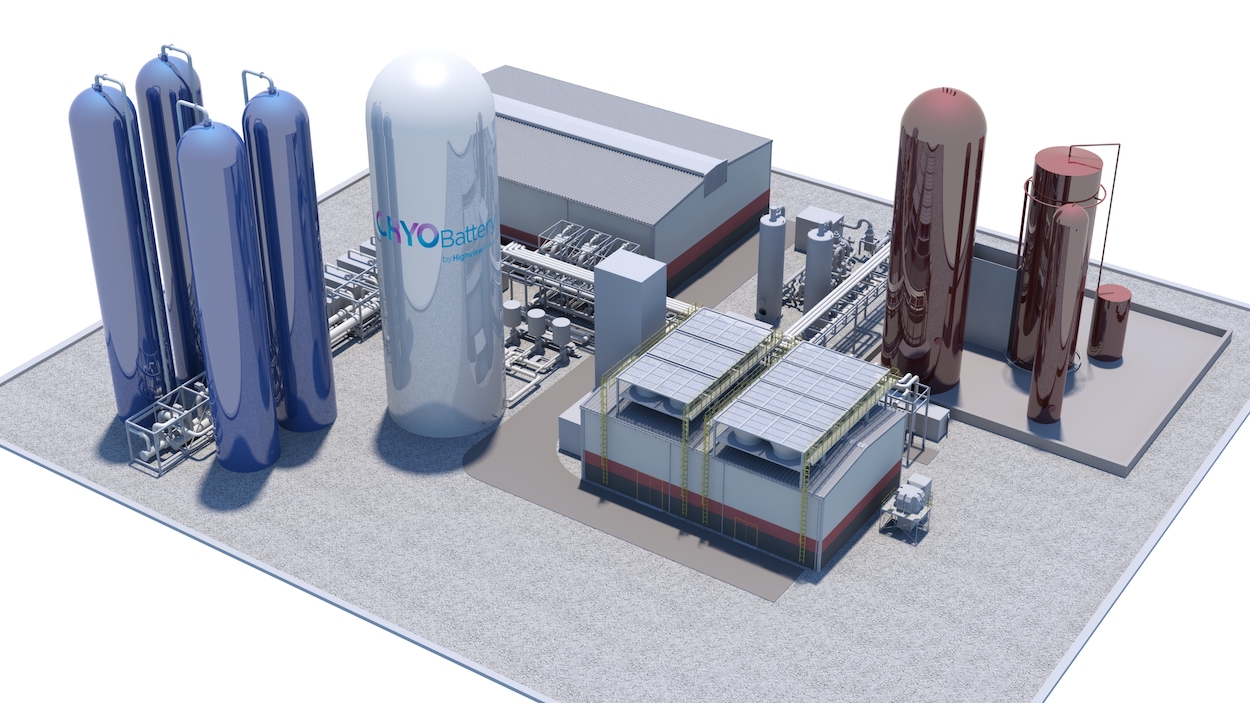
Image: Highview Power
Highview Power has begun site work for its 50MW/250MWh liquid air energy storage facility in Greater Manchester.
The CRYOBattery – as it has been dubbed – is being developed with Carlton Power and is to enter into commercial operation in 2023, with the intention of generating revenue through the Capacity Market, grid balancing, arbitrage and ancillary services such as frequency response and voltage support.
It was first announced in 2019, with a £10 million grant awarded to the project from the Department for Business, Energy and Industrial Strategy earlier this year.
The long-duration storage cools ambient air, turning it to liquid at -196°C. This liquid air is then stored at low pressure and later heated and expanded to drive a turbine and generate power.
It is one of many types of long-duration storage being developed, although Highview claims it to be the only long-duration energy storage solution available that is locatable and can offer multiple gigawatt-hours of storage.
The company also lauded the CRYOBattery’s “small footprint” as well as its ability to be scaled with no size limitations or geographic constraints.
An in-depth look at a variety of long-duration technologies and the companies behind them can be read in the feature article 'The Contenders: Long duration energy storage technologies and who's behind them' on sister site Energy-storage.news.
Javier Cavada, Highview Power CEO and president said the CRYOBattery “will help the UK to integrate renewable energy and stabilise the regional electrical grid to ensure future energy security during blackouts and other disruptions”.
It is also to have the potential for carbon capture and storage, being the first project consented in Europe as being fully Carbon Capture Ready. Its proximity to its designated carbon storage field makes the site “one of the most economically viable sites in the UK for conversion to carbon capture and storage”, according to the company.
In addition, the site is to have a visitor centre adjacent to the plant that will be open from Q1 2021. This is to allow visitors to see the progress of the site being built as well as to take virtual tours.

